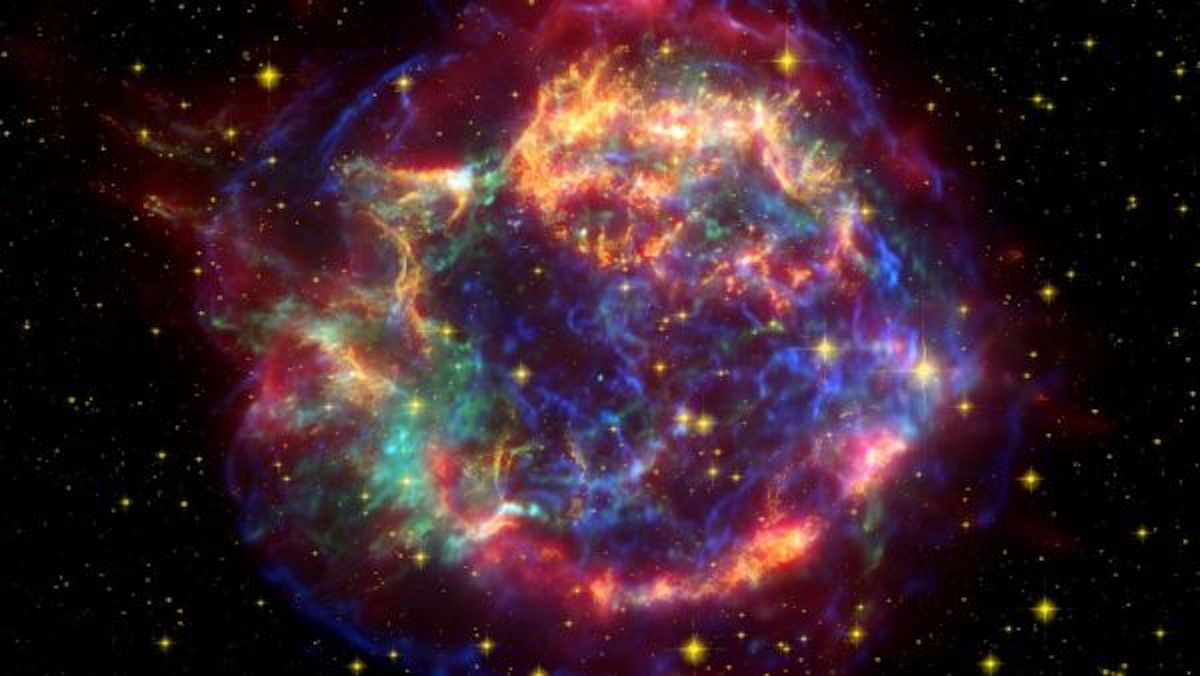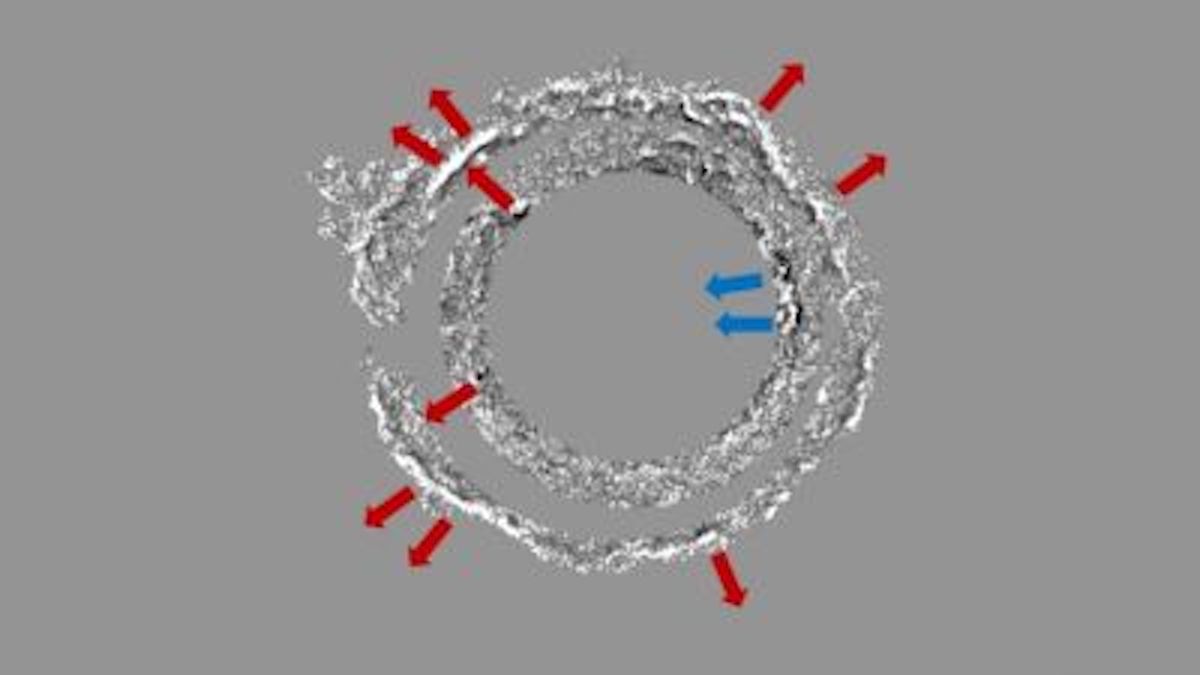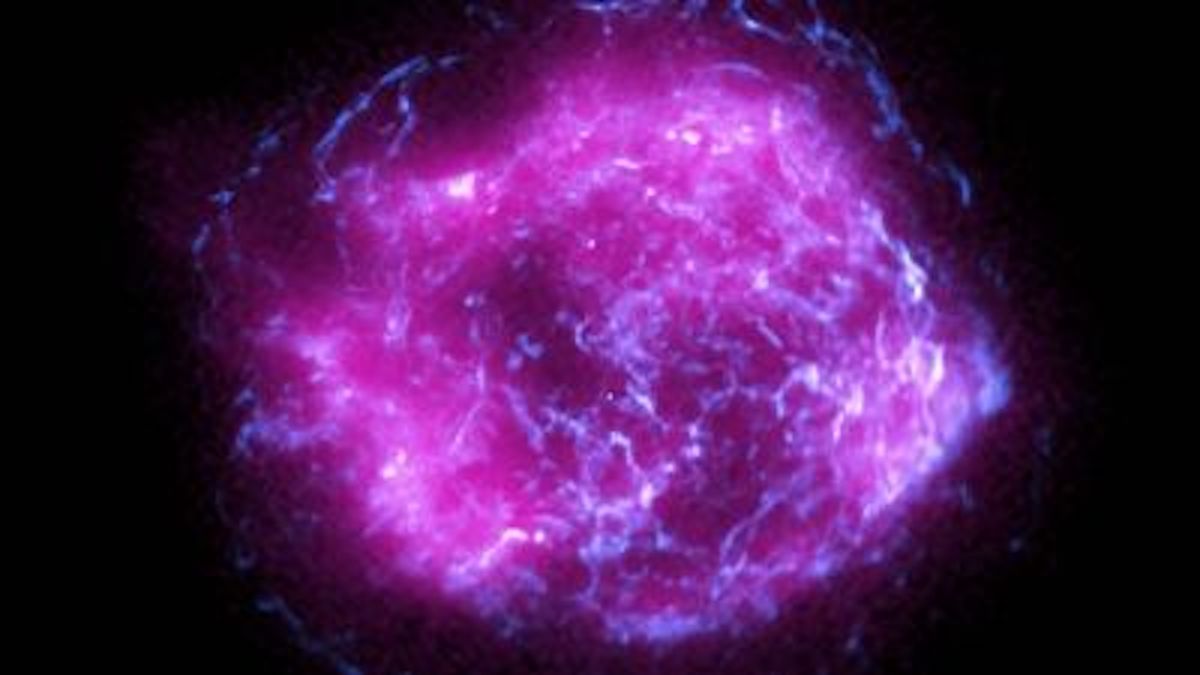A powerful shock wave passing through the Cassiopeia A gas cloud left after the supernova explosion has a strange feature. Part of the shock wave is moving in the wrong direction, as a new study shows. Astronomers have found that the shock wave accelerates at different speeds. In this case, one section collapses back to the source of the supernova, which the authors of the study call a reverse impact.

Cassiopeia A is a nebula or gas cloud left behind by a supernova in the constellation Cassiopeia. It is located about 11 thousand light-years from Earth, which makes it one of the closest supernova remnants to our Solar System. The nebula is about 16 light-years wide and consists of hydrogen. The shock wave from this explosion is still oscillating in the gas. Theoretical models show that this shock wave should expand evenly, like a perfectly rounded balloon that is constantly inflating. But observations show a completely different process.
“For a long time we suspected that something strange was going on inside Cassiopeia A. The internal movements inside the nebula were quite chaotic. The western region of the shock wave moving through the gas cloud may even move in the wrong direction,” explains astronomer Jacco Wink from the University of Amsterdam in the Netherlands.
Uneven Expansion
The researchers analyzed the shock wave motion using X-ray images collected by NASA’s Chandra, Hubble and Spitzer observatories. Data obtained over 19 years confirmed that part of the western region of the shock wave was indeed retreating in the opposite direction. But they also discovered something even more surprising. Parts of the same region accelerated away from the epicenter of the supernova, as did the rest of the shock wave.
According to Wink, the current average speed of expanding gas in Cassiopeia A is about 21.6 million km/h. This speed makes it one of the fastest shock waves ever observed in supernova remnants. That’s because this remnant from the explosion is still young. The light from Cassiopeia A reached Earth in 1970. But over time, the shock waves lose their impulse in their surroundings and slow down.
Shock Wave Structure
Cassiopeia A consists of two main expanding gas bands: an inner shell and an outer one. They are two halves of the same shock wave. For the most part, the inner and outer shells of the nebula move at the same speed and in the same direction. But in the western region they are moving in opposite directions: the outer shell is still expanding outward, and the inner one is moving back to the place where the star exploded.

The pushback is retreating at a speed of about 6.9 million km/h, which is about a third of the average expansion rate of the rest of the nebula. But what really puzzled the researchers was how rapidly the outer shell expanded compared to the retreating inner one in this region. The researchers expected that the outer shell would expand at a slower rate compared to the rest of the shock wave. “It was a complete surprise,” Wink said.
Space Collision
According to Wink, the unusual expansion in the western region of Cassiopeia A does not correspond to theoretical models of supernovae. Scientists suggest that something inexplicable happened to the shock wave after the explosion of the star.
The most likely explanation is that the shock wave collided with another gas shell, which was probably ejected by the star before it exploded. When the shock wave collided with this gas, it could slow down and create an increase in pressure that pushed the inner shell back to the center.

The researchers also believe that the unique manner of death of the original star may explain the irregularity of the shock wave. According to Wink, Cassiopeia A is the result of a type IIb supernova outbreak, when a massive star exploded after almost completely shedding its outer layers.
“X-ray estimates show that the mass of the star at the time of the explosion was about 18 times the mass of the Sun. This means that before the explosion, the star lost about 2/3 of its mass, most of which was hydrogen. The shock wave could later collide with this gas,” Wink suggested.
However, no one knows exactly what exactly fuels the uneven shock wave of Cassiopeia A. The study was published on the arXiv preprint server.
Follow us on Twitter to get the most interesting space news in time
https://twitter.com/ust_magazine
